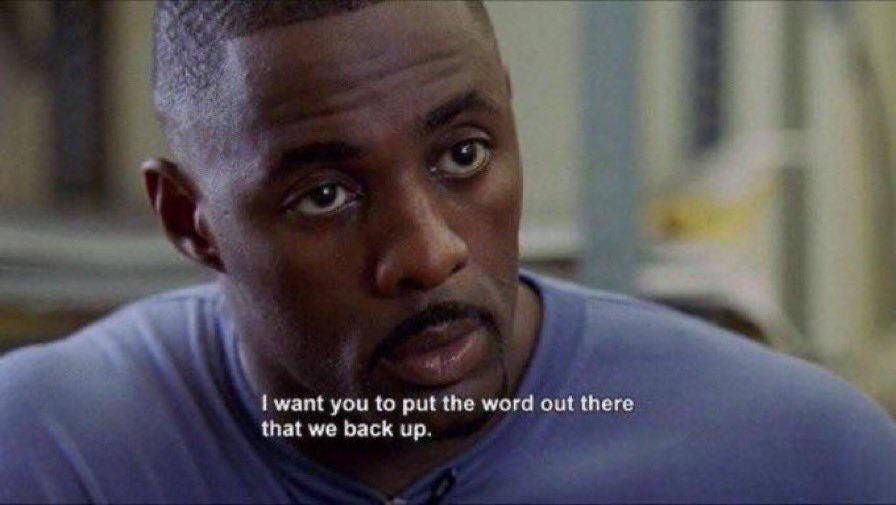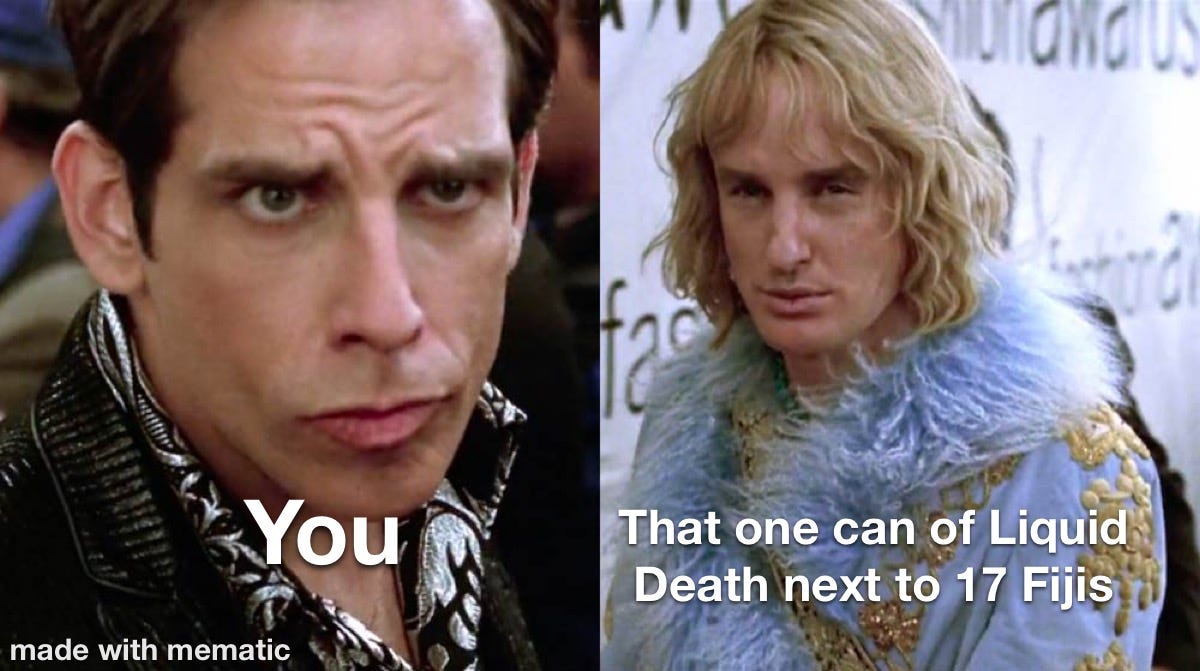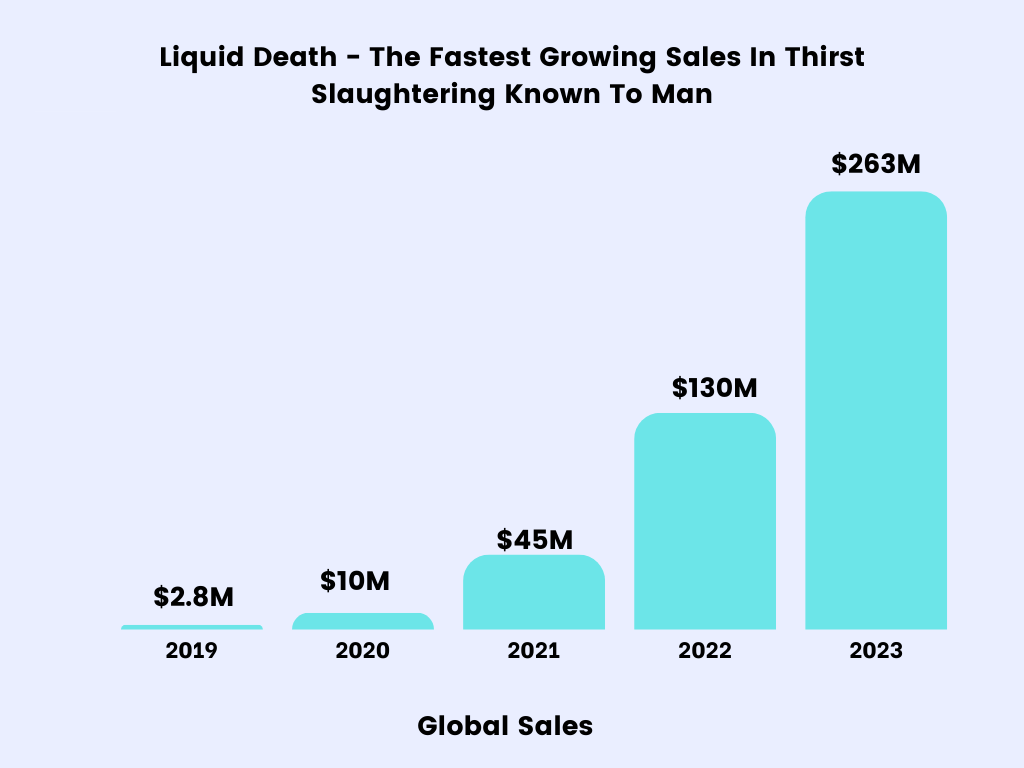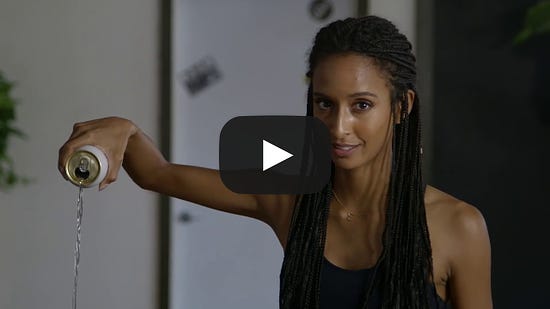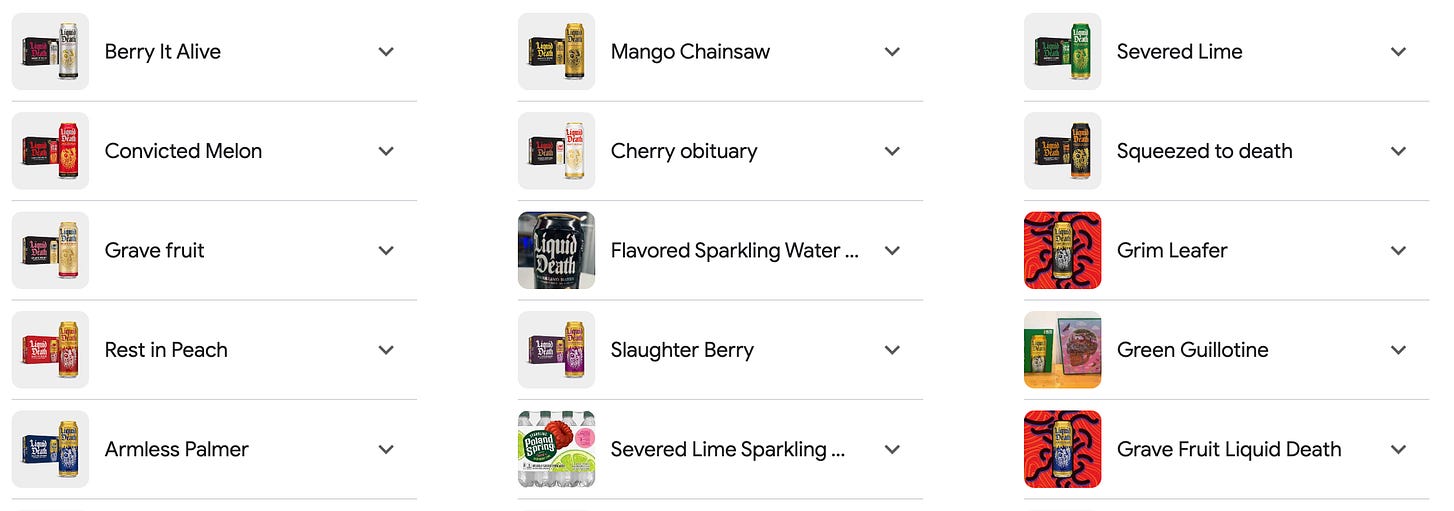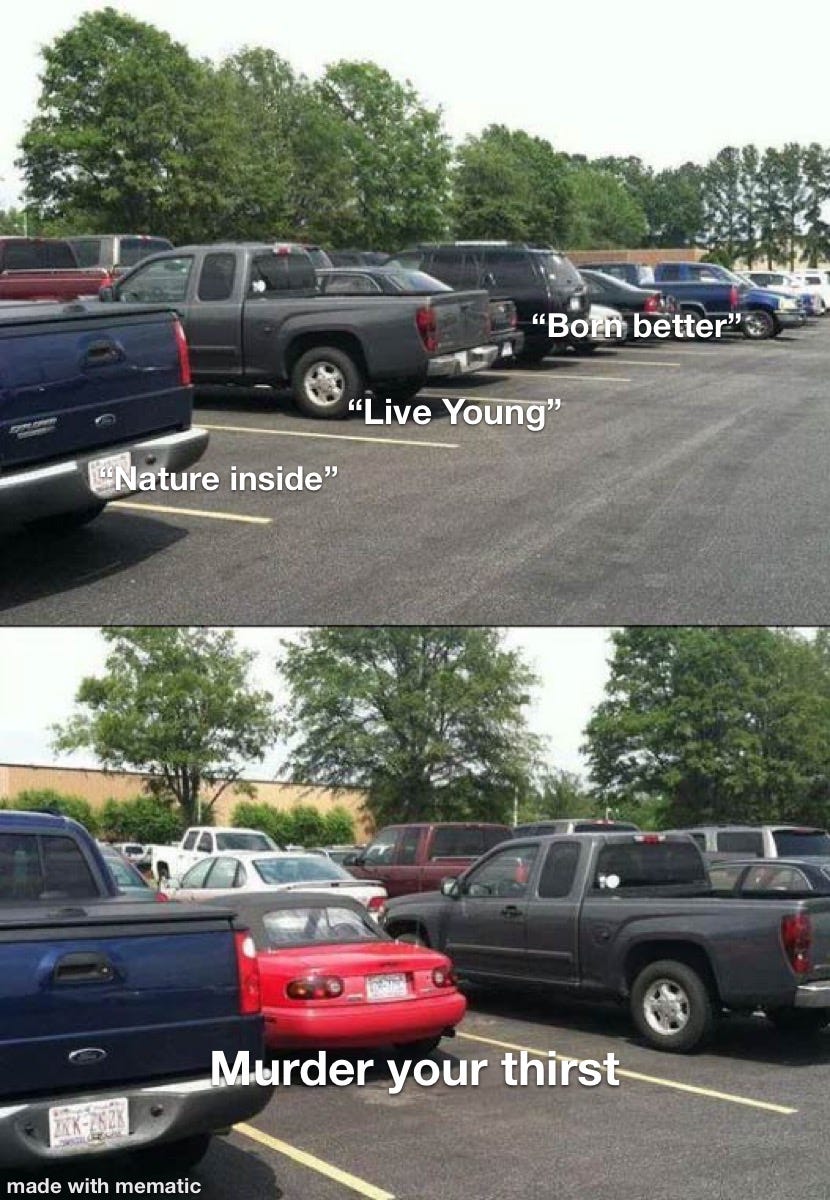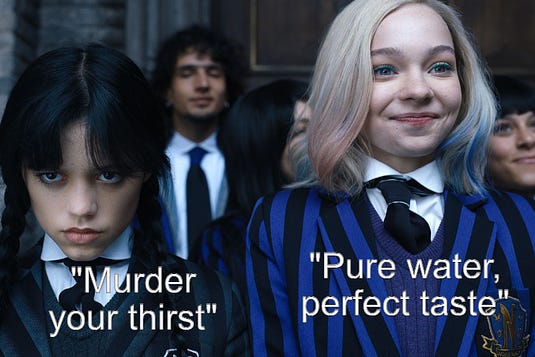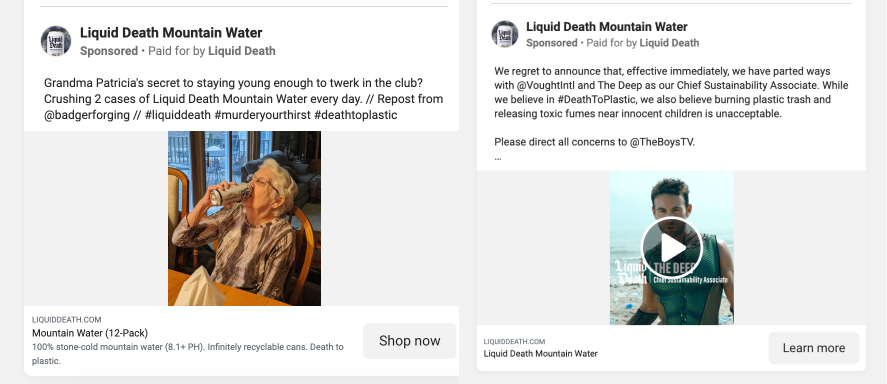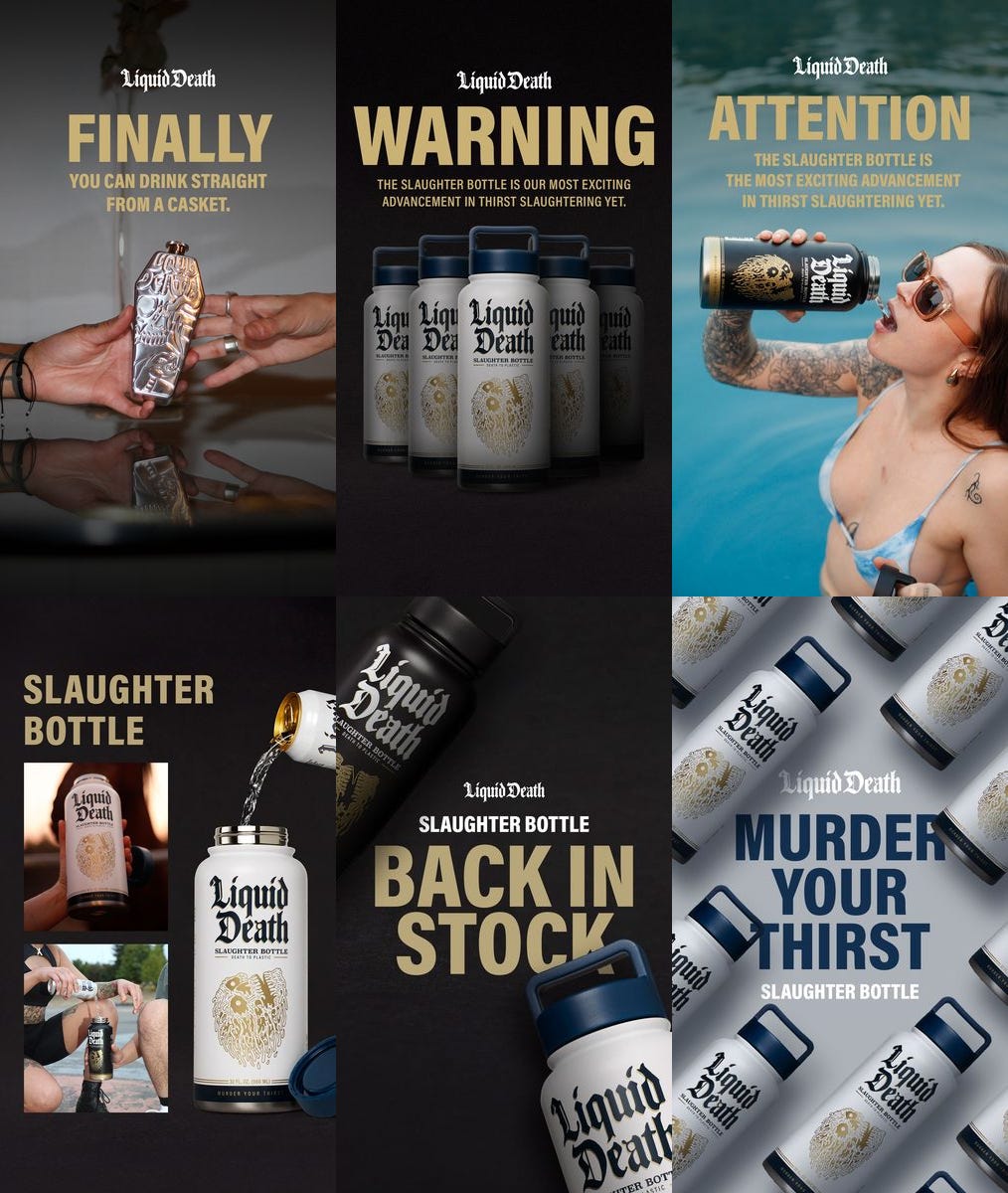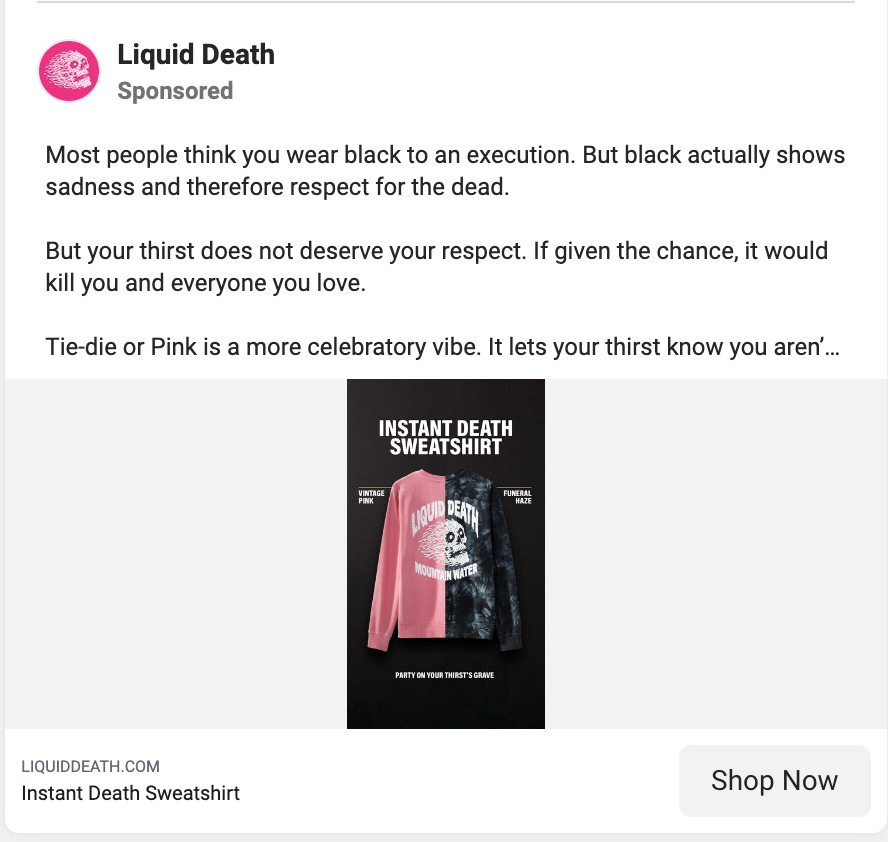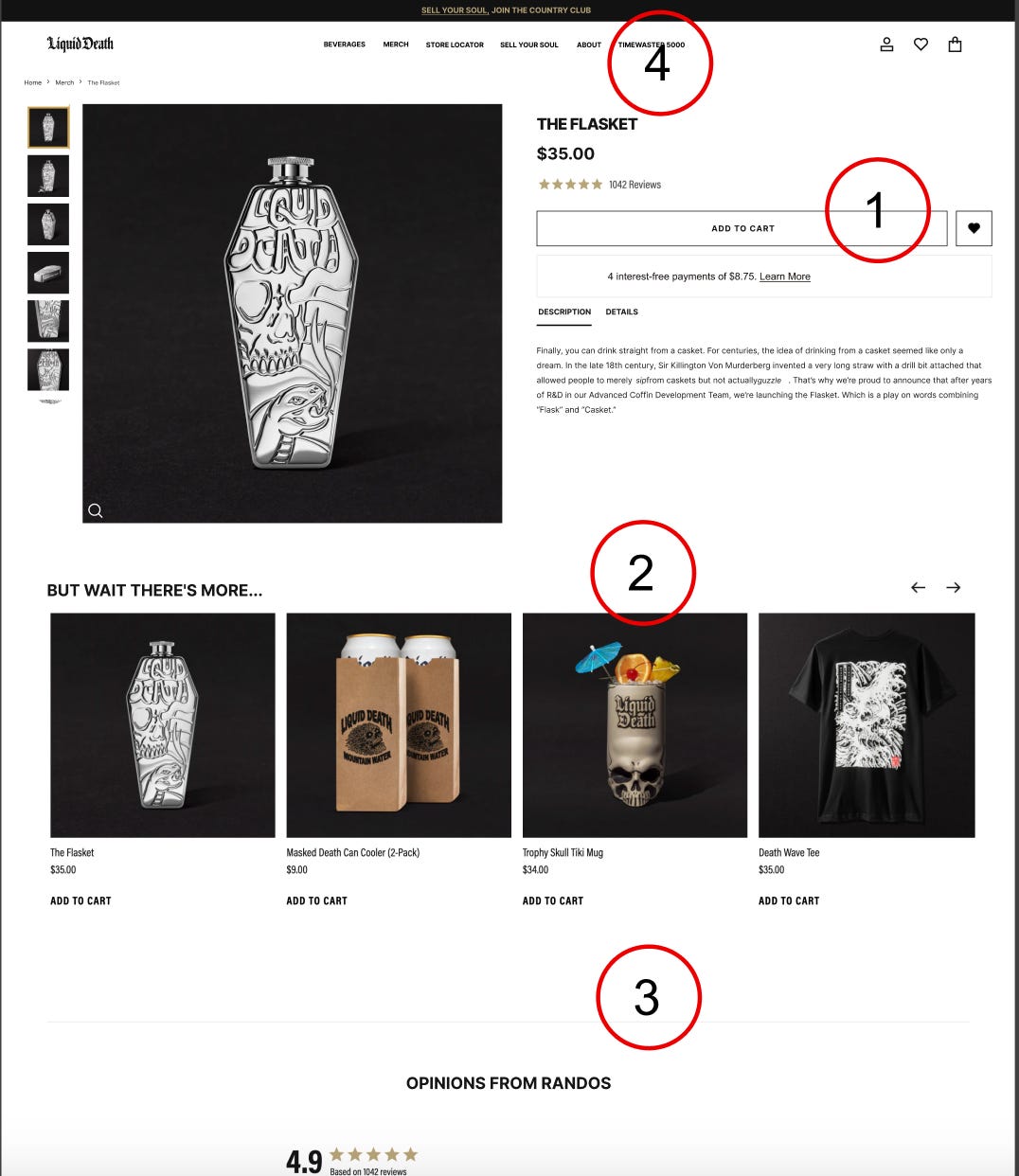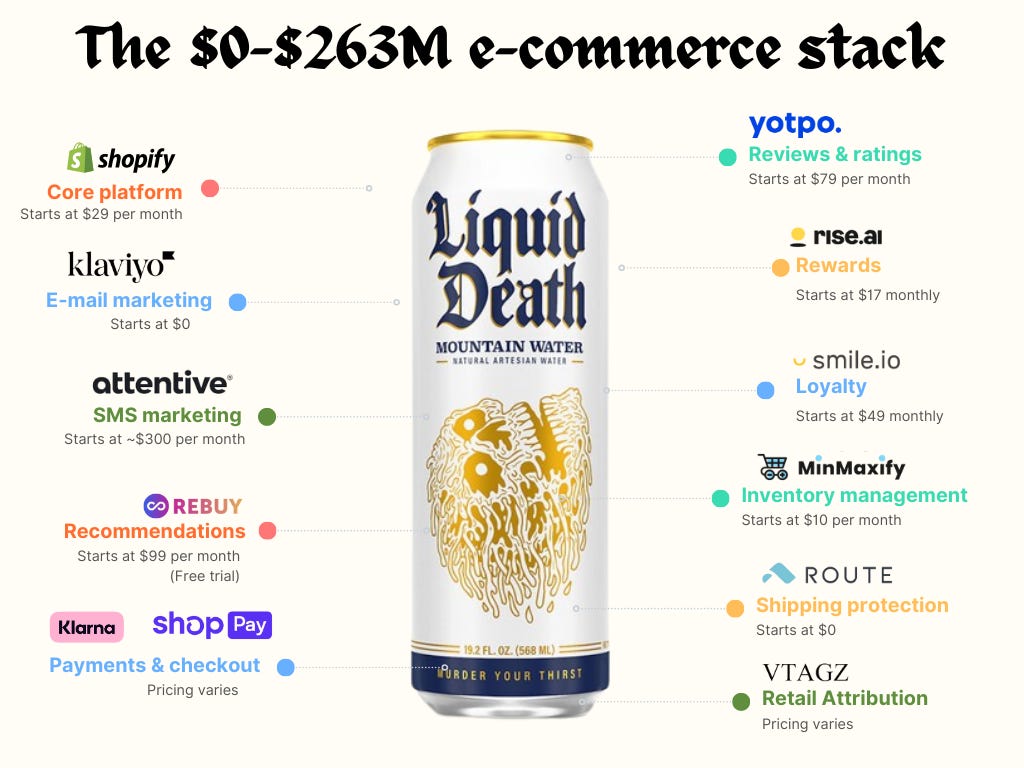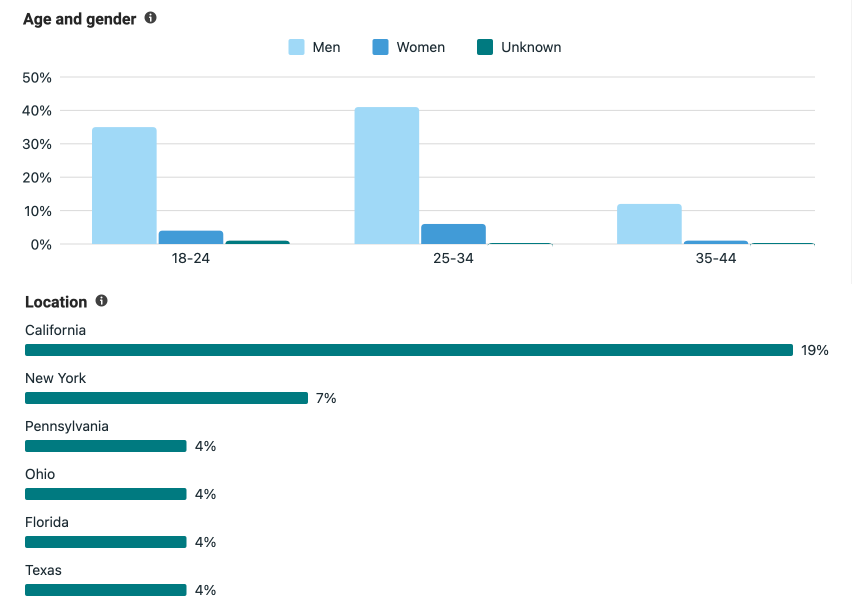Top of the lyne - Codifying Liquid Death's Disruption
Hey there 👋🏻 Ruchin here, back in your inbox after what feels like 321 days. (It’s been 321 days.) We started Top of the Lyne over two years ago, as a way to document the research we gathered from building for Product-Led Growth (PLG) companies. In 75 weeks, we covered 74 PLG companies. And the complete archive now rests here. And… then we went dark. Two years on, I find myself in a similar position once again. The product we built for PLG SaaS companies is now also being used by B2C companies to build first-party audiences for advertising campaigns. Top of the Lyne is now a way for me and my team to document our research on B2C marketing teams - with a lot of meat on the art & science of how brands run ads. You’re welcome to follow along. There’s a reason why Coke, despite maximal brand awareness, spends 4 billion dollars on ads every year. In the 1960s, social psychologist Robert Zajonc found himself possessed with the idea of the “mere exposure effect.” His observation was this: a novel stimulus initially elicits a fear and avoidance response in all organisms. And conversely, familiar stimuli evoke feelings of familiarity and eventually, fondness. Coke spends $4B every year to not become what Zajonc called “a novel stimulus.” ‘Mere exposure effect’ tricks our default mode network into thinking that just like coming across particular berries, animals, or insects repeatedly probably means that they are harmless to us, coming across the Coke logo 189 times every year means that Coke too, is probably harmless. This is why most ads you see can afford to be terrible. All they are looking to do is leave a logo and a name in your brain. A brain that’s designed to form opinions on arthropods in the Amazon rainforests, not the beverage aisle at Target. ‘Mere exposure effect’ is the reason people hate marketing. Good marketing is polarizing. It inspires opinion and becomes a voice for your identity. A vehicle to express your politics, status, wealth, or sense of humor. It can divide a room and crucially: invoke conflict. Great marketing does one even better. It can invoke a more familiar conflict: it can make you confront your lizard brain. Over the last 7 years, Mike Cessario’s Liquid Death has managed to pull off a marketing masterclass that has built a loyal fan base of people who have all stood up and identified with the message at the core of their brand:
From “Tour Water” to Liquid DeathThe idea for Liquid Death was born at the Warped Music Festival 2008 when punk-rocker, skate-rat, and advertising veteran Mike Cessario spotted members of the bands drink water out of Monster cans with “Tour Water” labels. Something about that image of a band choosing to have their on-stage water packaged in aluminum cans with punk rock imagery revealed a truth about the subculture that had Mike convinced that this idea was worth something. The question was, how much? 16 years later, we have the answer: 1.4 billion dollars. Mike’s challenge was this: Can he enter a highly commoditized market (80+ known brands in the US alone at the time) with next to zero marketing budget while relying on one moat and one moat alone: Brand. Today, Liquid Death is valued at $1.4 billion as of its latest round, reporting $263 million in global sales annually (in 2023), having done triple-digit growth for three consecutive years. With 3.6 million followers on Instagram, 5.7 million on TikTok, and 40k+ on YouTube, while rated top-seller among still water charts on Amazon, it’s safe it say in 2024 that Mike Cessario’s disruption is complete. Liquid Death is rumored to go public later this year. This is the story of how Mike Cessario proved, through the reductio ad absurdum of water, that the right kind of advertising can disrupt a stale category and build a lasting business and brand. This is the art and science of how Liquid Death runs ads. The ArtThe Liquid Death brand is built on four key pillars:
With brand values more or less crystallized, Mike now took it to market. And he did it in his own unique way. Channeling his unique read on consumer behavior gleaned from years in advertising. Everyone wants something that they’re not supposed to have.
The original insight was this: to market water like a product that everyone between 15 and 50 thinks is cool: Beer. The brand’s logo and can design take inspiration from old beer brands. The typeface is a German Blackletter font that’s been popular among beer brands since centuries ago when beer came to the US from Germany. The name takes a leaf out of the book of Craft Beer brands - where names like Skullcrusher IPA, Arrogant Bastard Ale, Fat Tire IPA are expected and hardly surprising. But when you spot a name and a logo like that in the drinking water aisle - that’s a different story. Virality lurks in the dumbest places in your head.Maybe two places: grand product innovation, and just, the dumbest shit. And there is simply no room for grand product innovation in the drinking water category. Mike knew going in, that he was going to be operating within constraints. He was going to have next to zero money to spend on marketing. His only chance of survival was going to be word of mouth. He thought to himself, “What can I call this thing so that if someone sees it in a store, I am willing to bet that they will share that?” In hindsight, the answer is obvious. Use the frameworks of a known category in a new category.Funny, irreverent brands die because they’re unable to deliver the comedy and the irreverence consistently. So how do you deliver disruption consistently, and not as flashes in the pan? Mike and the team took the frameworks of marketing that have been time-tested, tried, and well-understood in the Craft Beer category and took it to a category completely unfamiliar to them. Allow us to walk you through the drinking water aisle at Wholefoods in 2018:
Imagine that at the end of that same aisle, you then spot this: Liquid Death - Murder Your Thirst. Which one would you remember? Your brand is a professional wrestler.
No one actually believes that the Undertaker is a dead man who burnt his younger brother Kane, during their childhood and subsequently helped develop Kane’s pyromania, fire-manipulating powers, and supernatural strength. People are willing to entertain the deeper relationship with the plot and characters despite the obvious facade of WWE. Mike makes the argument that brand-building is not that different. Great brands feel like theater, where people build deeper more sophisticated associations in their minds that go beyond their functional benefits. Beyond source location, PH balance, electrolytes, alkalines, and other ways of adding color to plain old colorless, tasteless, odorless H2O. Here’s Steve Jobs agreeing with Mike, while announcing Apple’s “Think Different” campaign and simultaneously course-correcting Apple’s marketing from functional benefits to, the Apple of today. 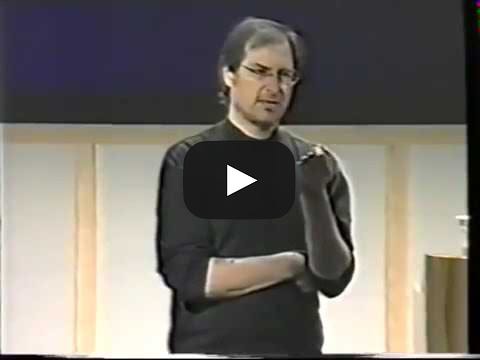 Liquid Death’s VP of Creative Andy Pearson puts the polarization that the Liquid Death brand plays to as this: The brand makes you feel like you are in on a joke. You either get the joke and the humor, or you don’t. The brand creates a feeling of exclusivity based on a sensibility, rather than functional benefits, price, or product. The ScienceAs of the latest publicly available numbers, ~6-10% of Liquid Death annual sales came from merchandise sales. Their apparel and accessory collections range from dog toys to casket bottles (The Flasket) to a skateboard collection lined with paint mixed with Tony Hawk’s blood. They’re a “revenue driver with great margins” says Mike. 90%+ of their digital ads on Meta and Google run to sell merchandise and boost brand. There’s a lot to borrow from Liquid Death’s advertising science if you’re a specific type of brand/product: That is if you’re placed in a crowded category with a primary differentiation that is looking to drive D2C merchandise sales and in-store retail purchases while sustaining brand relevance and consistency. Let’s take a look under the hood of their marketing stack. 1. Campaigns 📜Liquid Death’s Meta & Google campaigns fall into broadly four themes - all highly replicable by other brands looking to achieve the same outcomes of store & D2C purchases and brand.
2. Creatives 🎆Liquid Death uses a combination of images and videos that stick true to their can design and general irreverence, with somewhat of a pattern across their Meta creatives:
3. Copy ✍🏻The average Meta ad follows the following template that looks surprisingly simple and yet has to be the hardest thing to do at scale, over time, consistently.
Let’s play that back in an actual ad. Premise: “Most people think you wear black to an execution. But black actually shows sadness and therefore respect for the dead.” Name drop: “Tie-die or Pink is a more celebratory vibe. It lets your thirst know you aren’t just there to watch it die but to party on its grave afterwards.” CTA: The Instant Death Sweatshirt - Shop now. 4. Landing Pages 📃This is totally unnecessary, and probably over the top for us to break down the components of a landing page that, let’s be honest, is only trying to minimize the friction to purchase as much as possible, and not force action. You’ve likely already made that decision. But conversion friction is reduced in four big ways:
5. Pixels 👾A handful of neat Pixels run on these landing pages, that power the conversion and the buying experience after the ad click.
6. Audience controls 👯Liquid Death’s total addressable market is theoretically, well, everyone. The product form factor and the brand-niche both make the ad targeting sweet-spot highly specific. Their geographic and demographic trends point to men between the ages 18-34, with a large share in the brand’s home state. There’s very little publicly available data on audience controls on Meta & Google, but this is what we’d do if we were inside the “Supplying Demand Inc.” ad accounts. (Yes, it’s really called that) Interest stacking Likely derivatives of the brand pillars of sustainability, punk-rock, metal, comedy. All subcultures the cult of Liquid Dealth has high overlap with. De facto no-brainer choices. Website visitors Alright look, we know paid channels drive mostly merchandise sales, and that forms only 6-10% of their total sales (as of the latest available data), but here’s where the brand could be doing much, much more. While interest stacking is helpful, it’s highly constrained. As far as seed audiences go, the best approximation of long-term value and brand appreciation is data that Liquid Death already owns: Actions visitors take on their website. No Meta Pixel running on their ad landing pages limits them from using the following signals to build seed audiences for Meta campaigns. (It looks like Google PMax campaigns target interest-based audiences too.)
Seed audiences, graded by intent and predicted lifetime value, with broad targeting on Meta & Google PMax, typically work better than interest-stacking - especially for brands like Liquid Death that swim against the current. The Toplyne Pixel is now free to try for 30 days. Value-based audiences generated from your website data can create a ~35-40% lift in ROAS in just 30 days. Coming up: More advancements in thirst slaughtering 🔮The real test of the weight of the Liquid Death brand is this: Is the formula that worked so well in the drinking water category transferable? With their new product launches, the brand is now entering the iced tea, sparkling water, and electrolyte retail shelf spaces. Here, their competition is Gatorade, Perrier, Snapple, and other household names. But in their DNA, they pack a weapon that the “household” names have far outgrown, and sealed with red tape.
Risk. Invite your friends and earn rewardsIf you enjoy Top of the Lyne, share it with your friends and earn rewards when they subscribe. |
Older messages
What's in the box?
Saturday, September 2, 2023
The contents of the '23 Time Capsule we're burying in San Mateo next week
Our conference season watchlist
Wednesday, August 2, 2023
The ultimate guide to all destinations that should be a part of your Techtember pilgrimage.
It's conference szn ⚡️
Thursday, June 22, 2023
+ why June is the new September
High churn, low LTV
Tuesday, June 20, 2023
"What's that?" - Murf AI
These boots are made for strappin'
Saturday, May 20, 2023
"...and that's just what we'll do." - Userflow founders
You Might Also Like
Animal Shine And Doctor Stein 🐇
Monday, March 3, 2025
And another non-unique app͏ ͏ ͏ ͏ ͏ ͏ ͏ ͏ ͏ ͏ ͏ ͏ ͏ ͏ ͏ ͏ ͏ ͏ ͏ ͏ ͏ ͏ ͏ ͏ ͏ ͏ ͏ ͏ ͏ ͏ ͏ ͏ ͏ ͏ ͏ ͏ ͏ ͏ ͏ ͏ ͏ ͏ ͏ ͏ ͏ ͏ ͏ ͏ ͏ ͏ ͏ ͏ ͏ ͏ ͏ ͏ ͏ ͏
upcoming analyst-led events
Monday, March 3, 2025
the future of the customer journey, tech M&A predictions, and the industrial AI arms race. CB-Insights-Logo-light copy Upcoming analyst-led webinars Highlights: The future of the customer journey,
last call...
Monday, March 3, 2025
are you ready? ͏ ͏ ͏ ͏ ͏ ͏ ͏ ͏ ͏ ͏ ͏ ͏ ͏ ͏ ͏ ͏ ͏ ͏ ͏ ͏ ͏ ͏ ͏ ͏ ͏ ͏ ͏ ͏ ͏ ͏ ͏ ͏ ͏ ͏ ͏ ͏ ͏ ͏ ͏ ͏ ͏ ͏ ͏ ͏ ͏ ͏ ͏ ͏ ͏ ͏ ͏ ͏ ͏ ͏ ͏ ͏ ͏ ͏ ͏ ͏ ͏ ͏ ͏ ͏ ͏ ͏ ͏ ͏ ͏ ͏ ͏ ͏ ͏ ͏ ͏ ͏ ͏ ͏ ͏ ͏ ͏ ͏ ͏ ͏ ͏ ͏ ͏ ͏ ͏ ͏ ͏ ͏ ͏
🦄 Dimmable window technology
Monday, March 3, 2025
Miru is creating windows that uniformly tint—usable in cars, homes, and more.
Lopsided AI Revenues
Monday, March 3, 2025
Tomasz Tunguz Venture Capitalist If you were forwarded this newsletter, and you'd like to receive it in the future, subscribe here. Lopsided AI Revenues Which is the best business in AI at the
📂 NEW: 140 SaaS Marketing Ideas eBook 📕
Monday, March 3, 2025
Most SaaS marketing follows the same playbook. The same channels. The same tactics. The same results. But the biggest wins? They come from smart risks, creative experiments, and ideas you
17 Silicon Valley Startups Raised $633Million - Week of March 3, 2025
Monday, March 3, 2025
🌴 Upfront Summit 2025 Recap 💰 Why Is Warren Buffett Hoarding $300B in Cash 💰 US Crypto Strategic Reserve ⚡ Blackstone / QTS AI Power Strains 🇨🇳 Wan 2.1 - Sora of China ͏ ͏ ͏ ͏ ͏ ͏ ͏ ͏ ͏ ͏ ͏ ͏ ͏ ͏ ͏ ͏ ͏
⛔ STOP paying suppliers upfront - even if they offer a cheaper price in return!
Monday, March 3, 2025
You're not really saving money if all your cash is stuck in inventory. Hey Friend , A lot of ecommerce founders think paying upfront for inventory at a lower price is a smart move. Not always!
13 Content & Media Deals 💰
Monday, March 3, 2025
Follow the money in media ͏ ͏ ͏ ͏ ͏ ͏ ͏ ͏ ͏ ͏ ͏ ͏ ͏ ͏ ͏ ͏ ͏ ͏ ͏ ͏ ͏ ͏ ͏ ͏ ͏ ͏ ͏ ͏ ͏ ͏ ͏ ͏ ͏ ͏ ͏ ͏ ͏ ͏ ͏ ͏ ͏ ͏ ͏ ͏ ͏ ͏ ͏ ͏ ͏ ͏ ͏ ͏ ͏ ͏ ͏ ͏ ͏ ͏ ͏ ͏ ͏ ͏ ͏ ͏ ͏ ͏ ͏ ͏ ͏ ͏ ͏ ͏ ͏ ͏ ͏ ͏ ͏ ͏ ͏ ͏ ͏ ͏ ͏ ͏ ͏ ͏ ͏ ͏
📂 EXACTLY how Teachable got the first $1M ARR
Monday, March 3, 2025
Here's what the founder of Teachable, Ankur Nagpal, said about growing Teachable to their first $1M in ARR. Later, they'd sell for $250M! Fall 2013 I was 24 years old and had just moved
